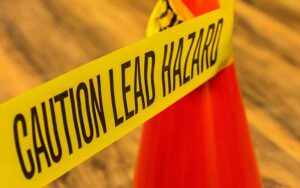Toxic Heavy Metals
What Every Construction Worker Should Know About Lead Poisoning
Lead is a common additive in many items found on construction sites. From paint to solder, from electrical conduit to welding wire – lead is a component of many materials used in the construction industry. Iron rusts and corrodes; lead-based paint inhibits this process. Though the Consumer Product Safety Commission has ended its use in residences, lead-based paint continues to be used in steel structures such as railways, bridges, ships, and lighthouses. Exposure to lead can occur during the construction of these structures as well as during their demolition, the removal of materials containing lead, and during any repair process to the materials used in the structure.
If you or a loved one work in the construction industry, you want to be aware of the signs of lead poisoning. People suffering from lead poisoning might experience sleeplessness, stomach cramps, constipation, fatigue, muscle and joint pain, headaches, and irritability. Long-term exposure might lead to high blood pressure, brain or kidney damage, nerve disorders, and infertility issues.
Construction workers, ironworkers, and laborers across all industries can ingest lead dust while eating or drinking. Even while smoking. The following activities might expose a worker to high levels of lead:
- Grinding, sanding, or the use of other power tools
- Blasting
- Burning, torch-cutting, or welding
- Cleaning contaminated areas
- Busting rivets
- Scraping and sanding
If you work in the construction industry or if your employment requires you to engage in any of the above activities, you want to monitor your health for concerns that might be caused by lead poisoning. Lead poisoning is a form of heavy metal toxicity, but there are treatments available such as chelation therapy products from Chelation Health Products. For more information, contact us today to see what options are available for you. We’re here to answer any questions you might have.


